Geen onderdeel van een categorie
Etherische oliën: Een industrie van licht en schaduw?
I am thrilled and immensely grateful to declare that Anima Mundi Herbals has officially acquired and relaunched Floracopeia essential oils. This is the brand I’ve nurtured for over 20 years, grounded in the principles of organic farming, community-based healthcare, and the safeguarding of traditional botanical knowledge. As we celebrate this momentous merger, allow me to enlighten you, my new Anima community, on the nuanced landscape of the essential oil business:
Throughout my extensive practice in aromatherapy and my global collaborations with skilled distillers, I’ve come to understand that the realm of essential oils is intricate and fraught with complexities. This sector is a tapestry of enigmas and inconsistencies, offering both boundless potential and significant risks. We have been fortunate to witness timeless models of ecologically sustainable practices through this industry. However, it has also spawned irresponsible exploitation of Mother Nature’s resources.
Just like other agricultural sectors, be it herbal remedies or organic produce, the essential oil business is plagued by quality assurance challenges like product adulteration. Nevertheless, it also serves as a vessel for some of the purest treasures Earth has to offer. This industry has the power to either uplift agricultural communities financially or to take advantage of them. Similarly, when used appropriately, essential oils and aromatherapy have immense therapeutic benefits; but misuse or lack of adequate knowledge can result in harmful side effects.
Op reis door aromatische wonderen: Floracopeia heruitgevonden door Anima Mundi
Laten we beginnen aan een begeleide verkenning van de aromatische wonderen die afkomstig zijn van Floracopeia’s internationale web van eco-initiatieven en bekwame distilleerders, die nu opnieuw worden gepresenteerd in Anima Mundi’s lijn van uitzonderlijke kruidenproducten. Terwijl we door deze oliën navigeren, zullen we ons verdiepen in de belangrijkste aspecten van hun productie en toepassing, zoals kwaliteitsgarantie, behoud van bedreigde diersoorten, milieuvriendelijke methoden en richtlijnen voor veilig gebruik.
Een terugkerende vraag die ik in de loop van mijn carrière ben tegengekomen, is: “Waarom bieden jullie essentiële oliën aan die zijn afgeleid van bedreigde flora?”. Deze vraag is vooral relevant voor oliën op basis van bomen zoals Palo Santo, wierook, sandelhout en rozenhout. Deze oliën zijn zeer gewild, maar de bomen waarvan ze afkomstig zijn, hebben vaak vele jaren nodig om te vernieuwen en als gevolg daarvan worden bepaalde soorten in bepaalde regio’s bedreigd of met uitsterven bedreigd.
De schaarste en stijgende prijzen van deze hulpbronnen hebben een tweeledig effect: het beperkte aanbod en de stijgende vraag stimuleren verdere overbevissing. Aan de andere kant kunnen de hoge marktwaarde en de beperkte beschikbaarheid deze soorten tot winstgevende landbouwinvesteringen maken, wat de aanzet geeft tot het opzetten van duurzame landbouwprojecten.

In dealing with these oils, comprehensive knowledge about their provenance is crucial. By sourcing from ethical and sustainable initiatives, we can actively back the efforts to conserve and rejuvenate these plant species. Conversely, acquiring oils from nondescript markets or companies that feign ecological responsibility augments the risk of contributing to ongoing environmental degradation.
The good news is that there are increasingly more agroforestry ventures reaching a point of maturity, allowing us to endorse operations that not only produce oils from sustainably grown sources but also contribute to broader ecological restoration.
Among the newest entrants in our aromatic repertoire is Anima Mundi’s rosewood oil. In Peru, old-growth rosewood trees have been virtually exhausted. The oil we offer is extracted from the leaves rather than the heartwood, ensuring the trees remain unharmed. The oil is not just a sensory delight but also a poignant narrative. It allows us to directly aid the Amazonian communities who are diligently working to reforest their homeland.

De fijne kneepjes van de productie van etherische oliën: Duurzaamheid en concentratie
Een andere dringende kwestie op het gebied van de productie van etherische oliën, die nauw verbonden is met de kwestie van duurzaamheid, draait om de enorme hoeveelheid plantenmateriaal die nodig is om deze oliën te destilleren. Eucalyptusbomen zijn bijvoorbeeld overvloedig aanwezig, niet bedreigd, en hun bladeren leveren jaarlijks grote hoeveelheden olie op tegen lage kosten, waarbij vervalsing ongebruikelijk is. Maar hoe zit het met de rozenolie, een ander aromatisch juweeltje in de collectie van Anima Mundi, waarvoor ongeveer 7.000 kilo met de hand geselecteerde bloesems nodig zijn om slechts één liter olie op te leveren? Is dit niet een exorbitant verbruik van land, water, energie en menselijke inspanning?
De inwoners van de Vallei der Rozen in Bulgarije geven misschien toe dat het arbeidsintensief is om zo’n groot aantal rozen te telen en te oogsten. Ze beweren echter dat ze dit al meer dan zeven eeuwen doen, 35 generaties lang, waardoor het een duurzame vorm van landbouw is. De rozenolie, het rozenwater en de rozenblaadjes die ze produceren zijn al eeuwenlang onmisbare grondstoffen in de geneeskunde, parfumerie en culinaire kunsten wereldwijd. Ik heb tijd doorgebracht in andere rozenteelt hotspots zoals Marokko’s Vallei van de Rozen, en ik zou ook willen beweren dat deze specifieke industrie een voorbeeld is van het creëren van een aards paradijs, waar elk element – van de geurige lucht tot de lokale cultuur en economie – harmonieus met elkaar verweven is.
Let’s shift our focus to another facet of this biomass-to-product ratio, this time related to Anima Mundi’s offerings of tulsi and chamomile oils. Consider this: how many cups of chamomile tea could an acre of chamomile plants produce? While I’ve never crunched those numbers, it’s clear that the same amount of plant matter can yield the same volume of herbal treatment, be it as a dry herb or as an oil, albeit in different concentrations.
This brings us to the essence of aromatherapy: concentration. This is why it can either be incredibly therapeutic and soothing, or conversely, a cause for significant discomfort and inflammation.
Let’s visualize an acre of tulsi thriving in the warm climate of South India. Following harvest, this acre transforms into a massive heap, awaiting either drying for tea or distillation for oil. When the plant is whole, the concentration of the essential oil—responsible for the herb’s distinctive fragrance—is at a level that is compatible with biological systems. This means we can safely consume it in moderate quantities, say, as a tea or in food. However, once distilled into oil, this acre of tulsi will condense into only a few liters, making it highly concentrated and therefore not biocompatible. It’s critical to understand that “not biocompatible” signifies a potential hazard; improper or undiluted application could lead to harmful consequences.
The crux of aromatherapy lies in its simplicity: a large volume of biologically safe plant matter is condensed into a smaller, more potent form that must then be diluted back to safe levels. This is commonly achieved through uncomplicated means like using a diffuser or mixing with a carrier oil for applications such as baths and massages.

Het tweesnijdende zwaard van aromatherapie: Verdunning, kwaliteit en verantwoordelijkheid
Van alle controversiële kwesties rond essentiële oliën en aromatherapie, springt onjuiste verdunning eruit als de meest verontrustende. De marketingverhalen hebben jarenlang gevaarlijk beweerd dat essentiële oliën veilig zijn voor onverdunde inwendige en uitwendige toepassing. Extreme voorspraak omvat zelfs gevaarlijke praktijken zoals het toedienen van olie via vaginale, rectale, oculaire en auditieve wegen, wat leidt tot medische crises, een toename van vergiftigingsgevallen en zelfs gevaarlijke gevolgen voor huisdieren. Het is alarmerend dat velen ten onrechte geloven dat deze toxische reacties symptomen zijn van “ontgifting”, terwijl het in werkelijkheid vergiftiging is.
Het principe is eenvoudig als je te maken hebt met essentiële oliën of welke vorm van kruidengeneeskunde dan ook: meer is niet gelijk aan beter. Goed geïnformeerde consumenten zijn cruciaal. De formule voor essentiële oliën kan niet duidelijker zijn: verdunnen, verdunnen, verdunnen – en dan genieten.
Om over te schakelen op kwaliteitscontrole: een terugkerende vraag die ik tegenkom is: “Welk bedrijf levert de zuiverste oliën?”. Hoewel mijn antwoord inherent partijdig zou zijn, is er een fundamentele waarheid die iedereen moet begrijpen: de gevoeligheid voor vervalsing en besmetting wordt bepaald door de plantensoort en niet door het bedrijf dat de plant verkoopt.
Hoe zeldzamer de olie, hoe groter de kans op vervuiling. Oliën van planten zoals rozen, die weinig opbrengen, of bomen zoals sandelhout, die langzaam regenereren, lopen een groter risico. Het is onwaarschijnlijk om eucalyptusolie te vervalsen, die overvloedig en goedkoop is, terwijl oliën zoals roos of sandelhout een lucratieve verleiding vormen voor vervalsing.
Het identificeren van vervalsingen in oliën gaat in twee stappen. Ten eerste, ken je bron – beter nog, werk nauw samen met distilleerders en telers. Het noodplan bestaat uit laboratoriumtests die gespecialiseerd zijn in essentiële oliën. Deze tests bevestigen niet alleen de zuiverheid, maar bieden ook waardevolle inzichten in de therapeutische aspecten van de olie.
Bij het testen van olie van onzekere bronnen is het niet ongebruikelijk om een scala aan verontreinigingen en versnijdingsmiddelen te ontdekken. Dit kan variëren van botanische vervangingen, zoals citroengras toegevoegd aan citroenmelisse, of het toevoegen van synthetische verbindingen om de olie te verlengen. Kennis van de bron en de zuiverheid van de olie is van het grootste belang, zeker als je bedenkt dat verontreinigingen gevaarlijk kunnen zijn voor de gezondheid, vooral voor mensen die chemisch gevoelig zijn.
Het domein van de aromatische geneeskunde is ingewikkeld, rijk en fascinerend. Elke olie dient als toegangspoort tot de intelligentie van de plant waar hij van afkomstig is, zijn culturele achtergrond, medicinale voordelen en zelfs zijn unieke energiekosmologie. In volgende blogs zullen we ons verder verdiepen in deze aromatische juweeltjes.
Tot slot gaat mijn oprechte dank uit naar Adriana Ayales voor het integreren van de aromatische schatten van Floracopeia en haar uitgebreide netwerk van eco-projecten en ambachtelijke distilleerders in het uitzonderlijke assortiment kruidenproducten van Anima Mundi.








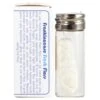



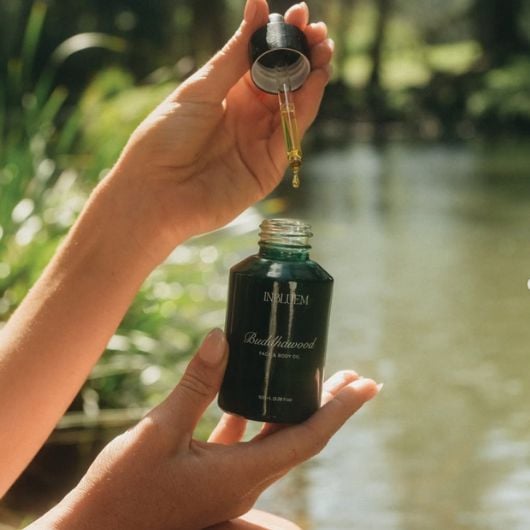














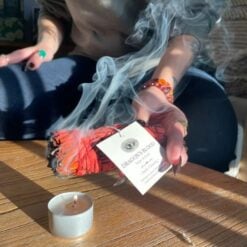

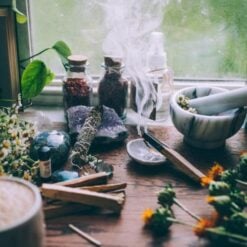


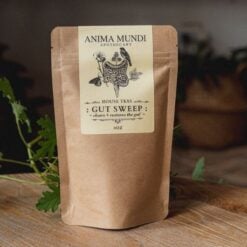
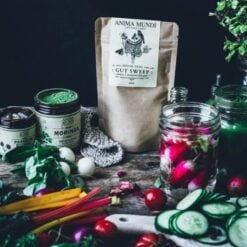

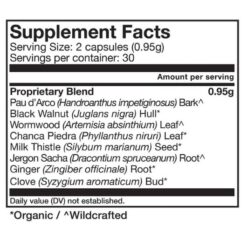


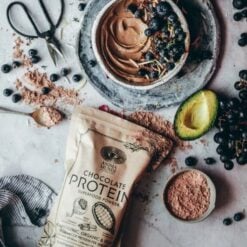









 Beauty Producten
Beauty Producten Merken van A-Z
Merken van A-Z Welzijn
Welzijn Gezondheid / Voeding
Gezondheid / Voeding